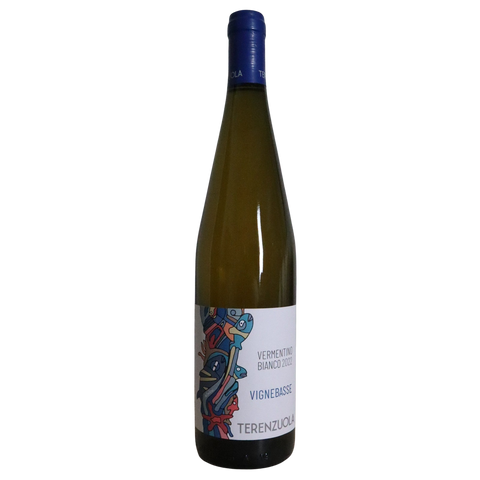
2023 Terenzuola "Vigne Basse" Vermentino, Toscana IGT, Tuscany, Italy
There are 5 units left in stock.
ABOUT THIS WINE
95% Vermentino (including clones of Rolle and Favorita from across the Mediterranean Basin) and 5% Albarola. 24 plots of Vermentino are further broken down in 50-70 different micro fermentations, all started with indigenous yeast by pied-du-cave. Tuscan loam and clay soil. Altitudes of the Vigne Basse range from 50-100 meters above sea level. There is skin contact in reduction from 24-48 hours maximum by parcel. After fermentation, the lots rest of the lees for 6 months before racking and bottling. 3333 cases produced.
ABOUT THIS PRODUCER
At once both Tuscan and Ligurian, the wines of Terenzuola reflect the duality of their terroir. The vineyards face the Mediterranean, which provides warm sun and cool breezes, but also find themselves in the Apuan Alps (a subzone of the Apennine mountain chain), which provide freshness and complexity. The resulting wines dance on the palate with an incredible balance of fruit, minerality, acidity and complexity. And the history of the family that owns the estate is no less captivating than the wines themselves!
The Giuliani family arrived in New York City in the late 1800s as emigrants from a difficult corner of Emilia Romagna. In the United States, they prospered until the great depression of 1929, when they decided to return to Italy. With their savings, they purchased a small three hectare farm in the northern part of Tuscany and in the southern part of Liguria, between the Apennine Mountains and the sea of Liguria. The area is known as the Lunigiana – after the city of Luni, an ancient Roman colony of the second century b.c. located near the mouth of the Magra river. Throughout history this has always been a contested area. In their times the Romans, the bishops of Medieval Italy, the feudal lords of Florence, and now the byzantine bureaucrats of today’s Italy have fought over the political borders of these lands.
Today, Ivan Giuliani is at the helm of the estate. As a young man, starting in 1993, he helped his uncle to bottle their harvest and sold the wine to local restaurants. But in 1995, he was called away from home to complete his mandatory military service. Entirely by coincidence, he was stationed in Friuli and Slovenia—“a borderland” not unlike his native Lunigiana. There he learned to make better wine alongside local vignerons and gained an appreciation for the idea of living off the land, as well as respecting it. Sustainability and environmentally-safe practices are a big part of his concern as a winemaker. When he finished his military service, he returned home and decided to dedicate his life to making wine at his family estate.
In 2007, together with his friend and fellow vigneron Marco Nicolini, he renovated the cellars at Terenzuola, and brought the total hectares under his management to 18. Also in this year, he formed a partnership with Evasio Pasini, whose family for centuries had lived and cultivated vineyards in the Riomaggiore township of the Cinque Terre. The landscape here was crafted by man over thousands of years of work by hand, without mechanization. The hillsides were terraced with sandstone rocks, skillfully placed one by one and kept together only with dirt and crushed stone, without the use of any mortar. In 2012, Terenzuola bought out Pasini from the Cinque Terre project and brought the label under the umbrella of Terenzuola.
Vineyard Practices: in conversion to organic viticulture since 2016, will be certified for the 2020 harvest
Colli di Luni – 8-9,000 vines/ha. Every other row is cultivated with a tractor (alternated each year) in order to avoid compacting the soil too heavily. Only organic treatments are used and copper sulphate is avoided. In fact, Ivan created a citric acid treatment for powdery mildew to further reduce his usage of copper.
Cinque Terre – 10-12,000 vines/ha with gobelet training. The vineyards are worked entirely by hand. Only organic treatments are used and copper sulphate is avoided. Citric acid treatments are used in its place.
